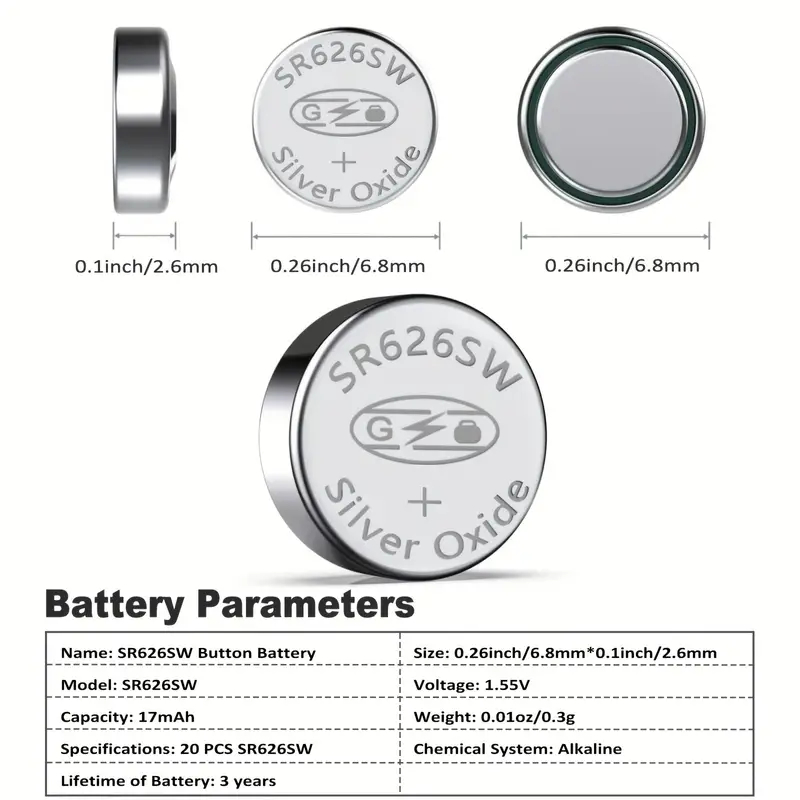An encoder is a device or algorithm that converts data from one format or code into another. In the context of technology and electronics, encoders are commonly used in various applications to translate different types of information, such as position, motion, or data, into digital signals that can be processed by electronic devices or systems. There are different types of encoders, each designed for specific purposes. Here are some common types of encoders:
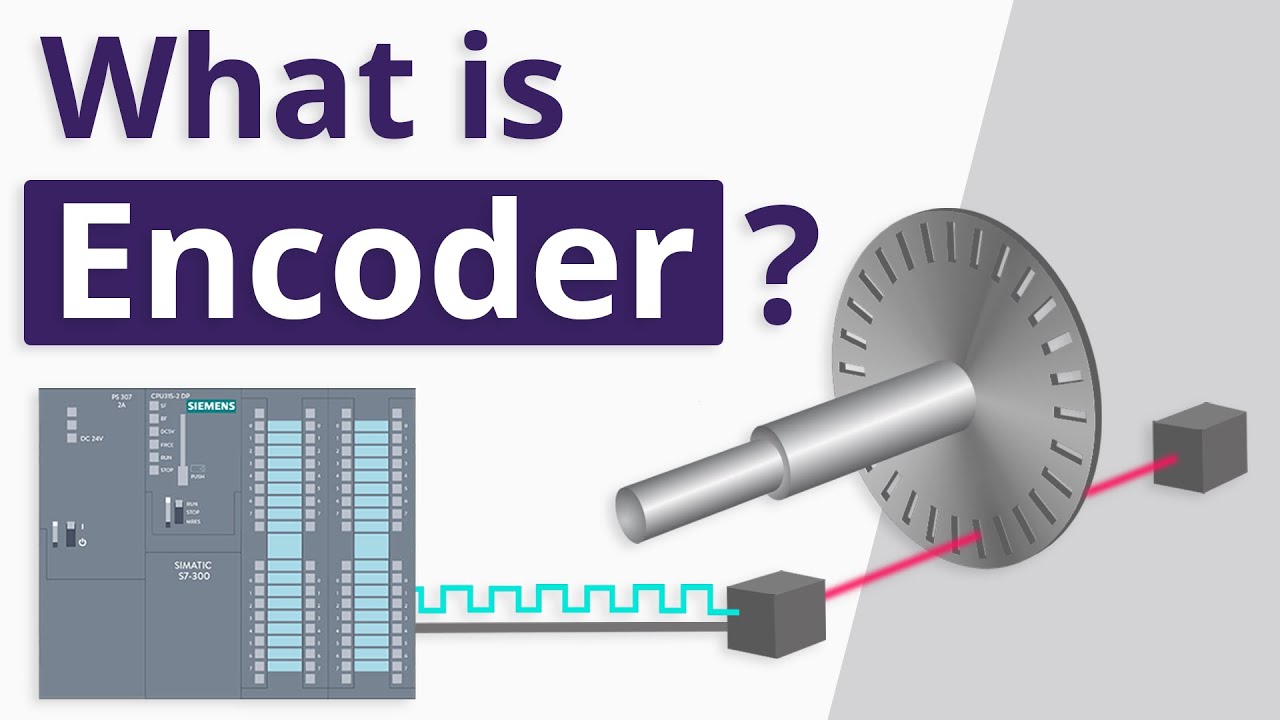
Types of Encoders:
-
Rotary Encoders: Rotary encoders convert the angular position or motion of a shaft into an analog or digital signal. They are often used in applications where knowing the precise position, speed, or direction of rotation is essential. Rotary encoders can be incremental (outputting pulses for both relative position and direction changes) or absolute (providing a unique digital code for each position).
-
Linear Encoders: Linear encoders are used to measure linear displacement or position along a straight path. They are commonly found in machines such as CNC (computer numerical control) systems, printers, and precision measurement equipment to accurately track the position of moving parts.
-
Optical Encoders: Optical encoders use a light source and sensor to detect changes in position. They are known for their high resolution and accuracy and are often used in applications where precise positioning is crucial.
-
Magnetic Encoders: Magnetic encoders rely on magnetic fields to detect position changes. They are durable, reliable, and resistant to environmental factors like dust and moisture, making them suitable for harsh industrial environments.
-
Incremental Encoders: Incremental encoders generate a series of pulse signals as the encoder shaft rotates, providing information about relative position changes. These pulses are used to determine speed, direction, and distance traveled.
-
Absolute Encoders: Absolute encoders provide a distinct digital code for each position, allowing the exact position to be identified without needing a reference point. This feature is valuable in applications where position accuracy is critical.
Applications of Encoders:
-
Motion Control Systems: Encoders are extensively used in robotics, CNC machines, servo motors, and other automated systems to provide precise position feedback and control motion accurately.
-
Industrial Automation: Encoders play a crucial role in various industrial applications such as conveyor systems, packaging machines, and production lines for monitoring and controlling the movement of machinery.
-
Consumer Electronics: Encoders are used in devices like computer mice, audio equipment, and video game controllers to track and interpret user input or movement.
-
Automotive Industry: In vehicles, encoders are employed for applications like wheel speed sensors, throttle position sensors, and transmission systems to monitor and control various functions.
-
Aviation and Aerospace: Encoders are utilized in aircraft systems for navigation, instrumentation, and control functions where precise positioning and movement tracking are necessary.
Encoders are fundamental components in modern technology, enabling precise measurement and control of position, speed, and other parameters in a wide range of industries and applications.
Classification of encoders
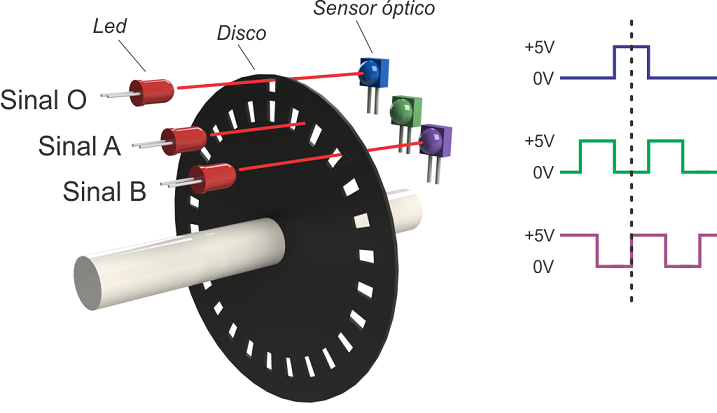
Encoders can be classified based on various criteria such as the type of output they provide (absolute or incremental), the technology used for sensing (optical, magnetic, capacitive), the way they measure motion (rotary or linear), and their application-specific features. Here is a classification of encoders based on different factors:
Based on Output Signal:
-
Absolute Encoders:
- Single-Turn Absolute Encoder: Provides a unique digital code for each position within one complete 360-degree revolution.
- Multi-Turn Absolute Encoder: Offers position information not only within one revolution but also tracks the number of complete revolutions made.
-
Incremental Encoders:
- Single Channel Incremental Encoder: Outputs a single pulse channel to indicate movement.
- Quadrature Incremental Encoder: Provides two pulse channels (A and B) that are 90 degrees out of phase, which allows the determination of both position and direction of movement.
Based on Sensing Technology:
-
Optical Encoders:
- Use a light source and photo detectors to track changes in position.
-
Magnetic Encoders:
- Relies on the interaction between magnetism and sensor components to detect motion.
-
Capacitive Encoders:
- Utilizes changes in capacitance to measure linear or angular displacements.
-
Inductive Encoders:
- Operate based on changes in inductance to determine position changes.
Based on Measurement Type:
- Rotary Encoders:
- Measure the angular position or rotational motion of a shaft.
- Linear Encoders:
- Determine linear motion or displacement along a straight path.
Based on Application:
-
Absolute Position Encoders:
- Provide absolute positioning information without needing a reference point.
-
Incremental Position Encoders:
- Output pulses to indicate relative movement but require a reference point for initialization.
-
Linear Encoders:
- Designed for measuring linear displacement or position.
-
Rotary Encoders:
- Used to track angular position or rotational motion.
Based on Resolution:
-
Low-Resolution Encoders:
- Provide basic position feedback without high precision.
-
High-Resolution Encoders:
- Offer precise position information with fine increments for accurate motion control.
Based on Construction:
-
Shafted Encoders:
- Have a shaft connected to the encoder for rotational measurement.
-
Hollow Shaft Encoders:
- Allow the encoder to fit around a rotating shaft, making installation easier.
-
Modular Encoders:
- Consist of separate components that can be assembled based on the specific application requirements.
Based on Environmental Protection:
- Industrial-Grade Encoders:
- Designed to withstand harsh environmental conditions in industrial settings.
- Hazardous Environment Encoders:
- Built to operate in potentially explosive or volatile environments.
Encoders play a vital role in various industries and applications where accurate motion control, position feedback, and speed measurement are crucial. Understanding the classification of encoders helps in selecting the right type based on the specific requirements of a given system or application.
Application of photoelectric encoder
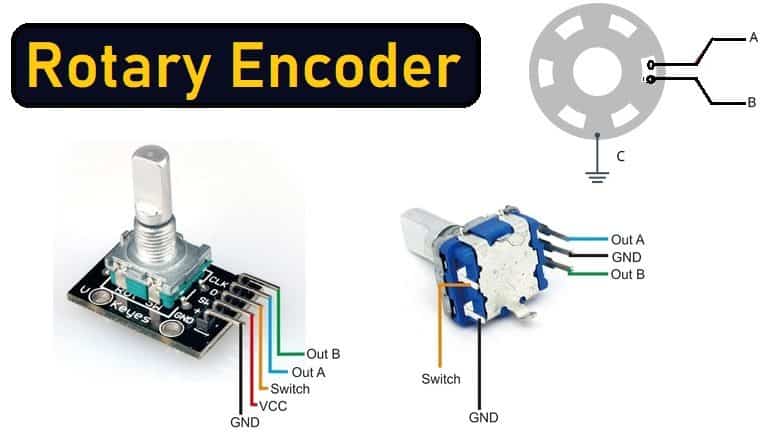
Photoelectric encoders are widely used in numerous industrial and commercial applications where precise position detection and speed measurement are essential. These devices utilize light to detect movement and are known for their accuracy, reliability, and adaptability to different environments. Here are some common applications of photoelectric encoders:
1. Robotic Systems:
Photoelectric encoders are integral components in robotic arms and automated systems where precise positioning and motion control are critical. They help robots accurately navigate their environment, manipulate objects, and perform tasks with high levels of precision.
2. CNC Machinery:
In Computer Numerical Control (CNC) machines used for milling, cutting, drilling, and other manufacturing processes, photoelectric encoders provide feedback on the position of tool heads and workpieces. This data ensures that the machine operates with accuracy and consistency.
3. Packaging Equipment:
Photoelectric encoders are used in packaging machinery to monitor the speed and position of conveyors, labeling machines, filling systems, and other components involved in the packaging process. This enables efficient packaging operations and ensures product quality.
4. Printing Industry:
In printing presses and digital printers, photoelectric encoders play a vital role in controlling the precise movement of print heads, paper feed mechanisms, and other components. This ensures that the printing process is accurate and consistent.
5. Textile Machinery:
Photoelectric encoders are utilized in textile machines such as looms and knitting machines to regulate the movement of fabric, yarn feeders, and other elements. They help maintain the desired fabric patterns and textures during production.
6. Medical Devices:
In medical equipment like surgical robots, imaging systems, and diagnostic machines, photoelectric encoders are used for precise positioning of medical instruments, patient tables, and other components. They contribute to the accuracy of medical procedures and diagnostics.
7. Automated Guided Vehicles (AGVs):
AGVs used in warehouses, factories, and logistics operations employ photoelectric encoders to navigate autonomously and transport goods efficiently. These encoders help AGVs determine their position, adjust paths, and avoid obstacles.
8. Conveyor Systems:
Photoelectric encoders are integrated into conveyor belts and systems to monitor the speed, direction, and position of items being transported. They help optimize material handling processes in industries such as warehouses, distribution centers, and production facilities.
9. Energy Generation:
In wind turbines and solar tracking systems, photoelectric encoders assist in aligning the panels or blades for optimal energy capture. They ensure that these renewable energy systems track the sun or wind direction accurately for maximum efficiency.
10. Automotive Industry:
Photoelectric encoders are utilized in automotive manufacturing processes for tasks such as robotic welding, assembly line operations, and quality control systems. They help ensure precise positioning and movement of components during production.
Overall, photoelectric encoders are versatile devices with applications across various industries where precise motion control, position feedback, and speed monitoring are vital for operational efficiency and accuracy.
Incremental encoder (rotary type)
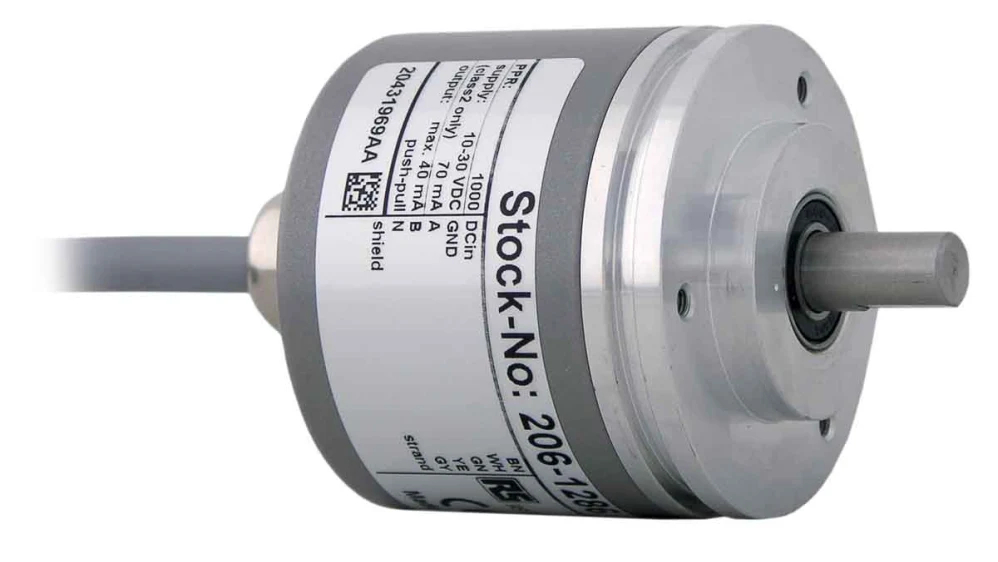
An incremental encoder, specifically the rotary type, is a device commonly used to convert rotary motion into digital signals to determine position and speed. Here's an overview of the key features, working principle, and applications of rotary incremental encoders:
Features of Incremental Rotary Encoders:
-
Pulses per Revolution: Incremental encoders generate a certain number of pulses for each full rotation of the encoder shaft. This number determines the resolution of the encoder and affects the accuracy of position and speed measurements.
-
Incremental Output: These encoders produce incremental signals that represent relative motion changes. They do not provide the absolute position information without an initial reference point.
-
Direction Sensing: By analyzing the phase relationship between two output channels (usually referred to as A and B channels), the direction of motion (clockwise or counterclockwise) can be determined.
-
High Resolution: Incremental encoders can provide high-resolution output, enabling precise measurement of angular position and velocity changes.
-
Cost-Effective: Compared to absolute encoders, incremental encoders are generally more cost-effective, making them popular in various industrial applications.
Working Principle of Incremental Rotary Encoders:
-
Optical or Magnetic Sensing: Incremental rotary encoders typically use optical or magnetic sensors to detect the motion of a rotating disk or scale attached to the encoder shaft.
-
Pulse Generation: As the encoder shaft rotates, the overlaying disk passes through the sensor, which generates electrical pulses as the marks on the disk alter the intensity of the light reaching the sensor (for optical encoders) or induce changes in magnetic fields (for magnetic encoders).
-
Channel Outputs: Incremental encoders commonly have two output channels - A and B - which are typically quadrature encoded. This means that the two channels are offset by 90 degrees in phase, allowing the detection of both position and direction of movement.
-
Index Pulse: Some incremental encoders include an additional index channel that generates one pulse per revolution, serving as a reference point for resetting position counts.
Applications of Incremental Rotary Encoders:
-
Motion Control Systems: Used in precision motion control applications such as servo motors, CNC machinery, robotics, and automated systems to monitor position and speed accurately.
-
Industrial Automation: Employed in industrial machinery for tasks like positioning control, speed regulation, and feedback systems to ensure smooth and accurate operation.
-
Printing and Packaging: Integrated into printing presses, labeling machines, packaging equipment, and conveyor systems to monitor and control the movement of components.
-
Position Feedback Systems: Utilized in applications where positional feedback is crucial, such as antennas, rotary tables, and positioning stages.
-
Speed Measurement: Applied in speed monitoring systems for motors, spindles, and other rotating equipment to regulate speed and detect abnormalities.
-
Test and Measurement: Used in test equipment, calibration devices, and instrumentation that require precise angular position and velocity measurement.
Incremental rotary encoders are fundamental components in various industries and applications where real-time position and speed feedback are essential for efficient and accurate operation. Their versatility, high resolution, and cost-effectiveness make them a popular choice for motion control and automation systems.
Absolute encoder (rotary type)
An absolute rotary encoder is a device used to convert rotary motion into digital information that uniquely identifies the absolute position of the encoder shaft without the need for a reference point. Here is an overview of the features, working principle, and applications of absolute rotary encoders:
Features of Absolute Rotary Encoders:
-
Absolute Positioning: Absolute encoders provide a distinct digital code for each position within a full revolution, offering immediate and precise information on the exact shaft position.
-
Non-Volatile Memory: Absolute encoders retain position data even when power is disconnected, ensuring that position information is maintained upon power-up.
-
Multiple Turns: Multi-turn absolute encoders provide information about the number of complete revolutions made by the encoder shaft, in addition to the position within a single revolution.
-
High Resolution: Absolute encoders can offer high-resolution output, allowing for fine positional control and accurate measurements.
-
Single-Turn or Multi-Turn: Absolute encoders can be single-turn (providing position within one revolution) or multi-turn (additional revolutions counted beyond one complete rotation).
Working Principle of Absolute Rotary Encoders:
-
Binary Code: Absolute encoders use a binary code to represent each unique angular position within a full rotation. The code can be in gray code, binary, or other formats.
-
Code Disc: The code disc in the absolute encoder is marked with binary patterns that represent specific angular positions. As the disc rotates, sensors detect these patterns and convert them into digital signals.
-
Position Data Output: Each position on the code disc corresponds to a unique binary code, which is then read by the encoder's electronics to determine the absolute position of the shaft.
-
Serial or Parallel Output: Absolute encoders can output position data in a serial or parallel format, depending on the encoder design and communication protocol.
Applications of Absolute Rotary Encoders:
-
Position Control Systems: Absolute encoders are used in applications where maintaining precise and absolute position information is critical, such as in CNC machines, robotic arms, and aerospace systems.
-
Feedback Systems: Employed in closed-loop feedback systems for accurate positioning feedback in industrial automation, machine tools, and motion control applications.
-
Navigation Systems: Utilized in navigation equipment for marine, aeronautical, and land-based vehicles to determine the orientation and heading of the vehicle.
-
Medical Devices: Integrated into medical equipment like MRI machines, robotic surgery systems, and patient positioning systems for accurate control and positioning.
-
Industrial Robotics: Used in robotic systems for tasks requiring precision and repeatability, such as pick-and-place operations, assembly, and material handling.
-
Renewable Energy Systems: Applied in solar tracking systems and wind turbine blades to ensure optimal alignment for increased energy efficiency.
-
Aviation and Aerospace: Found in aircraft control systems, avionics, and satellite positioning systems for precise navigation, control, and alignment.
Absolute rotary encoders play a vital role in various industries and applications where accurate and absolute position feedback is essential. Their ability to provide definitive position information without the need for homing sequences makes them ideal for applications requiring high precision and reliability.
Common faults
1.Encoder fault: it refers to the fault of the encoder's own components, which causes it to fail to generate and output the correct waveform. In this case, you need to replace the encoder or repair its internal components.
2.Encoder connection cable failure: This type of failure has the highest probability of occurrence, and it is often encountered during maintenance. Usually, the encoder cable is open-circuited, short-circuited, or poorly contacted. At this time, the cable or connector needs to be replaced. Special attention should also be paid to whether the cable is not tightly fixed, causing loosening or disconnection. At this time, the cable needs to be clamped.
3.Encoder +5V power supply drop: it refers to the +5V power supply is too low. The cause of the too low is that the power supply failure or the power transmission cable resistance is too large and the loss is caused, then the power supply needs to be repaired.
4.Absolute encoder battery voltage drop: This type of failure usually has a clear alarm. At this time, the battery needs to be replaced. If the memory of the reference point position is lost, the operation of returning to the reference point must be performed.
5.The shielded wire of the encoder cable is not connected or falls off: It will introduce interference signals, making the waveform unstable, and affect the accuracy of communication. It is necessary to ensure that the shielded wire is reliably welded and grounded.

